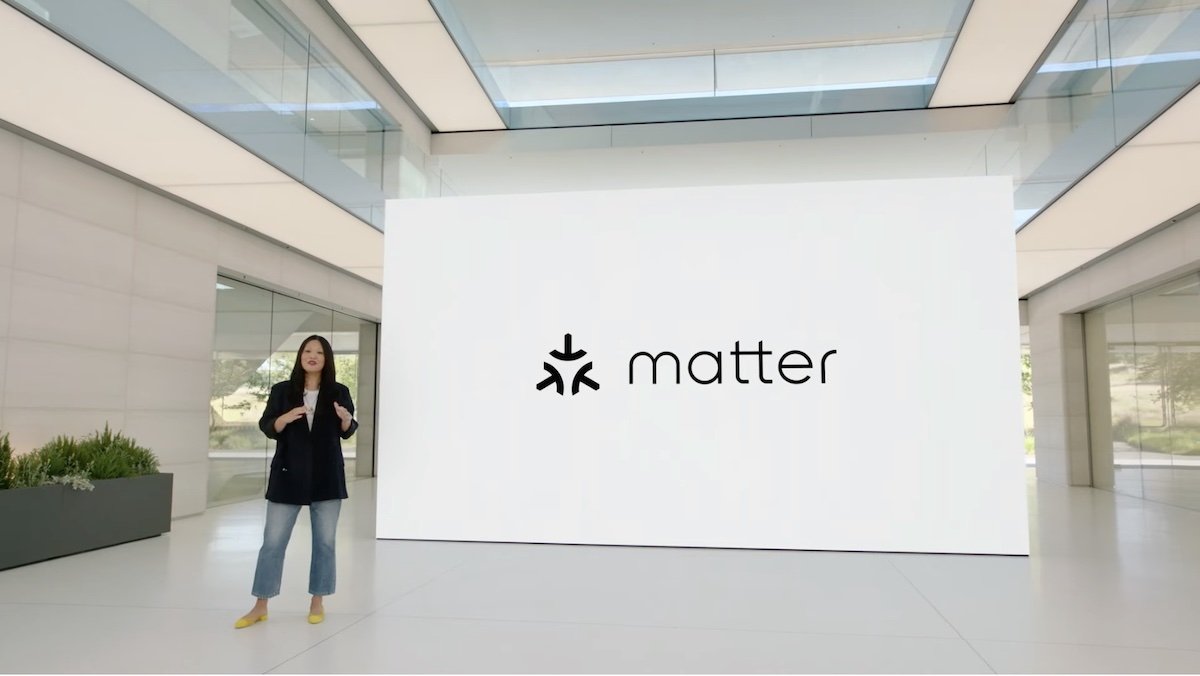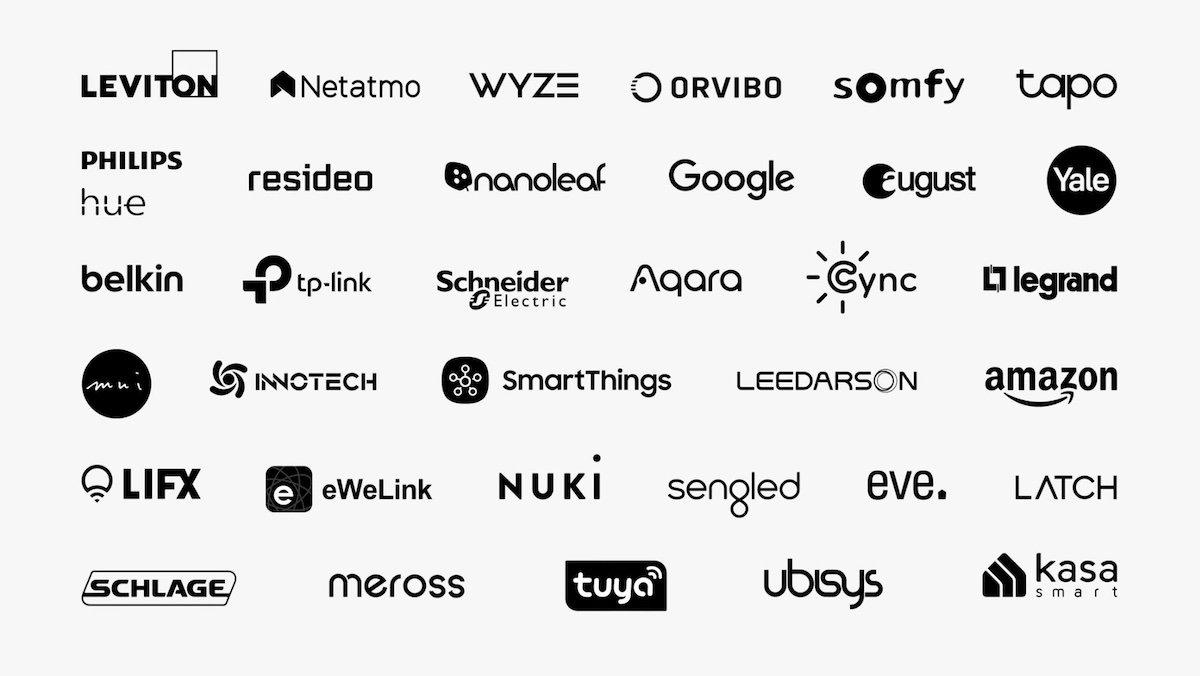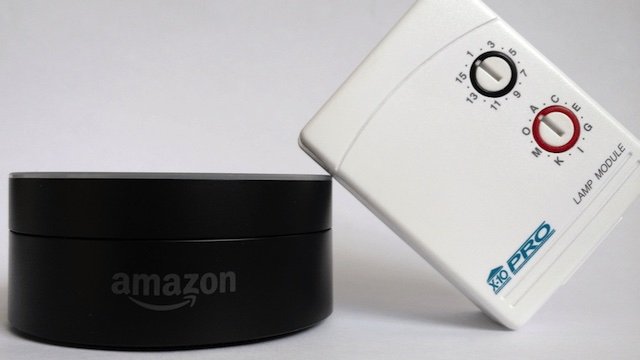From X10 to Matter: The smart home evolves again
The new standard Matter will enable easy, secure communication between smart home brands and devices -- and existing devices may be able to be updated to support it.

Apple has once again played a key role in the making of an industry-wide standard.
Although we are still in the early era of modern "smart home" accessories and integration, the first adopters of such technologies have long been aware that devices from one company may -- or may not -- work with another company's devices.
A newly-certified and industry-supported standard, called Matter, promises to end incompatibility and make nearly everything for the home that is "smart" able to work with each other. This has the potential to vastly open up the possibilities for today's -- and tomorrow's -- home gadgets.
Matter support arrived on the Mac as part of macOS Ventura, and has come to iOS and iPadOS with version 16.1, including tvOS (which also covers HomePod). This comes on the heels of the Connectivity Standards Alliance (CSA) certifying the official 1.0 release of Matter in early October.
A key part of this is that more than 200 makers of smart home accessories have signed on to support it.
By allowing different brands to work under a common control standard, Matter will provide big benefits to both buyers and sellers of smart home devices.
For the former group, it will take a lot of the "wild west" aspect out of product purchasing, with consumers no longer worrying if their new device can work with their existing setups or preferred voice assistants.
For manufacturers, there will be a single supported standard that reduces buyer confusion, and makes products from both new startups and established brands equally worthy of consideration.

Some of the 200+ companies that have signed on to support Thread and Matter.
This allowed control either manually through a console or by setting timers attached to outlets for the triggering of on/off states. The systems "communicated" through radio signals passed through a home's electrical wiring using Powerline technology -- the same system used in non-Mesh Wi-Fi extenders today.
Thus, the early decades of home automation relied heavily on gadget enthusiasts willing to take risks on future obsolescence for the fun of of controlling appliances. X10-controlled products are still available , though now relegated to largely niche and device-replacement markets.

Some hubs, such as Amazon's Echo Dot, still support X10 accessories.
With the rise of the internet and the later emergence of Wi-Fi technology to spread connectivity around the home, established companies such as Google moved quickly to create or acquire technology that moved its influence into devices that were not previously "smart" in the modern sense of the term. This led to an expansion from security-focused products to televisions, temperature control, and much more.
In 2014, Google's Nest division famously bought a smart-device company Revolv and then -- just two years later -- shut down Revolv's servers, which caused those products to stop working and angered buyers.
Earlier this year, popular maker Insteon and its parent company SmartLabs got caught off-guard by supply and liquidity problems and abruptly shut down. This cut communication with the central SmartLabs servers the devices depended on for communication -- and it joined companies like LIFX and SmartDry in stranding consumers who had invested in those products.
This has driven consumers to hedge their bets by buying smart-home devices that are made by or endorsed by large tech companies that are deemed less likely to go out of business or abandon their commitment to purchasers. This includes Google (despite the Revolv incident), Amazon, Samsung, and Apple, among others.
This has also led to the various companies starting to talk to each other about how to make their devices and the services they depend on more resistant to market misfortunes or changes in technology. In turn, this makes the devices more consumer-friendly.
Modern smart home gadgets now use devices that can serve as, or double as, hubs to facilitate inter-device communication. However, the hubs themselves are still reliant on a connection to the manufacturer's servers for things like firmware and feature updates.
If you own a HomePod or an Apple TV 4K, they act as hubs for many other devices -- but those devices, regardless of brand, all presently have to support Apple's Homekit framework if you want them all to be controlled by Apple's Home app.
The former Zigbee Alliance, now called the Connectivity Standards Alliance, gathered device makers, technology companies, and other industry leaders alike to settle on a way for devices to stay connected, speak the same "language" to each other, and communicate securely.
The core of Matter is built on the Internet Protocol, the same networking tech that servers, routers, and websites use to function.
Apple, one of the original group of companies to collaborate on Matter, contributed the HomeKit API as the foundation of the open-source standard. The addition made the security of inter-device communications -- previously not considered by most manufacturers -- as important as widespread industry adoption to ensure robust confidence among consumers.
Matter acts as a common "language" between various companies' devices, and like Thread, can now be supported or added to many current or recent devices through firmware upgrades.
Recent products that currently support Apple's HomeKit are considered more likely to be upgraded to support Thread and Matter, since HomeKit technology was incorporated into these standards. But big companies have not yet explicitly confirmed which devices can be or will be updated.
While Thread will act as a common networking tool among different companies' existing toolkits, Matter will bring secure, universal communication and coordination to all smart home hub devices that support it, or can be upgraded to support it. Consumers will be at last able to choose devices based on what the device can do to further automate their home functions, rather than being limited by, or bound to, specific brands and technologies.
Now that the CSA has certified Matter 1.0 as available for use, this January's Consumer Electronics Show and retailers should see a flood of new smart-home technology across 2023 that all "just gets along."
This should result in smart-home technology "going mainstream" with the public, boosting sales and encouraging additional innovation among established providers and startups alike.
For Apple users and smart-home enthusiasts, the road ahead is looking a lot smoother now.
Read on AppleInsider

Apple has once again played a key role in the making of an industry-wide standard.
Although we are still in the early era of modern "smart home" accessories and integration, the first adopters of such technologies have long been aware that devices from one company may -- or may not -- work with another company's devices.
A newly-certified and industry-supported standard, called Matter, promises to end incompatibility and make nearly everything for the home that is "smart" able to work with each other. This has the potential to vastly open up the possibilities for today's -- and tomorrow's -- home gadgets.
Matter support arrived on the Mac as part of macOS Ventura, and has come to iOS and iPadOS with version 16.1, including tvOS (which also covers HomePod). This comes on the heels of the Connectivity Standards Alliance (CSA) certifying the official 1.0 release of Matter in early October.
A key part of this is that more than 200 makers of smart home accessories have signed on to support it.
By allowing different brands to work under a common control standard, Matter will provide big benefits to both buyers and sellers of smart home devices.
For the former group, it will take a lot of the "wild west" aspect out of product purchasing, with consumers no longer worrying if their new device can work with their existing setups or preferred voice assistants.
For manufacturers, there will be a single supported standard that reduces buyer confusion, and makes products from both new startups and established brands equally worthy of consideration.

Some of the 200+ companies that have signed on to support Thread and Matter.
The forerunner: X10
Previously, if you wanted home automation devices from different companies to be controlled by one industry-wide protocol, you would have had to hop into a time machine and travel back to the late 1970s. Back then, the original "home automation" protocol -- the X10 network -- allowed for a "command center" to control the triggering of lamps and other light switches.This allowed control either manually through a console or by setting timers attached to outlets for the triggering of on/off states. The systems "communicated" through radio signals passed through a home's electrical wiring using Powerline technology -- the same system used in non-Mesh Wi-Fi extenders today.
Thus, the early decades of home automation relied heavily on gadget enthusiasts willing to take risks on future obsolescence for the fun of of controlling appliances. X10-controlled products are still available , though now relegated to largely niche and device-replacement markets.

Some hubs, such as Amazon's Echo Dot, still support X10 accessories.
With the rise of the internet and the later emergence of Wi-Fi technology to spread connectivity around the home, established companies such as Google moved quickly to create or acquire technology that moved its influence into devices that were not previously "smart" in the modern sense of the term. This led to an expansion from security-focused products to televisions, temperature control, and much more.
Growing pains
Technology moving from the "computer desk" to places like the basement and the living room was not without hiccups, however.In 2014, Google's Nest division famously bought a smart-device company Revolv and then -- just two years later -- shut down Revolv's servers, which caused those products to stop working and angered buyers.
Earlier this year, popular maker Insteon and its parent company SmartLabs got caught off-guard by supply and liquidity problems and abruptly shut down. This cut communication with the central SmartLabs servers the devices depended on for communication -- and it joined companies like LIFX and SmartDry in stranding consumers who had invested in those products.
This has driven consumers to hedge their bets by buying smart-home devices that are made by or endorsed by large tech companies that are deemed less likely to go out of business or abandon their commitment to purchasers. This includes Google (despite the Revolv incident), Amazon, Samsung, and Apple, among others.
This has also led to the various companies starting to talk to each other about how to make their devices and the services they depend on more resistant to market misfortunes or changes in technology. In turn, this makes the devices more consumer-friendly.
Modern smart home gadgets now use devices that can serve as, or double as, hubs to facilitate inter-device communication. However, the hubs themselves are still reliant on a connection to the manufacturer's servers for things like firmware and feature updates.
If you own a HomePod or an Apple TV 4K, they act as hubs for many other devices -- but those devices, regardless of brand, all presently have to support Apple's Homekit framework if you want them all to be controlled by Apple's Home app.
CSA, IP, and the Apple connection
The new Matter standard will be an overarching command and control system that will allow consumers the freedom to mix-and-match smart home devices without having to worry about interoperability. And with the goal of controlling all the devices through a single app, if desired.The former Zigbee Alliance, now called the Connectivity Standards Alliance, gathered device makers, technology companies, and other industry leaders alike to settle on a way for devices to stay connected, speak the same "language" to each other, and communicate securely.
The core of Matter is built on the Internet Protocol, the same networking tech that servers, routers, and websites use to function.
Apple, one of the original group of companies to collaborate on Matter, contributed the HomeKit API as the foundation of the open-source standard. The addition made the security of inter-device communications -- previously not considered by most manufacturers -- as important as widespread industry adoption to ensure robust confidence among consumers.
Thread binds devices to Matter
Thread, an IPv6-based, low-power mesh networking technology that is already out in the marketplace, augments Matter by adding standards for device-hub communication supported in two key ways:- Bluetooth Low Energy (primarily for battery-powered and/or nearby devices),
- Wi-Fi for hub communication with the internet, and
- A private, secure Wi-Fi mesh network created by the hubs for whole-house communication and coordination.
Matter acts as a common "language" between various companies' devices, and like Thread, can now be supported or added to many current or recent devices through firmware upgrades.
Recent products that currently support Apple's HomeKit are considered more likely to be upgraded to support Thread and Matter, since HomeKit technology was incorporated into these standards. But big companies have not yet explicitly confirmed which devices can be or will be updated.
While Thread will act as a common networking tool among different companies' existing toolkits, Matter will bring secure, universal communication and coordination to all smart home hub devices that support it, or can be upgraded to support it. Consumers will be at last able to choose devices based on what the device can do to further automate their home functions, rather than being limited by, or bound to, specific brands and technologies.
Now that the CSA has certified Matter 1.0 as available for use, this January's Consumer Electronics Show and retailers should see a flood of new smart-home technology across 2023 that all "just gets along."
This should result in smart-home technology "going mainstream" with the public, boosting sales and encouraging additional innovation among established providers and startups alike.
For Apple users and smart-home enthusiasts, the road ahead is looking a lot smoother now.
Read on AppleInsider

Comments
Also, Thread is not "a common "language" between various companies' devices". That's what Matter is.
Thread - mesh network protocol - how the messages are sent (such as a letter, email, telephone)
Matter - communication standard - what the message says, common language for smart home devices (such as English or French), can be sent over Ethernet, WiFi, or Thread
Apps and firmware will be built with Matter APIs instead of Homekit (or Google Home, etc.) APIs. For Matter enabled devices, Homekit will become the interface between Matter and the user.
Between X10 and Google, you all completely skipped over the dominant home and industry lighting automation platform of the 90s and 00s: Lutron RadioRA.
Just about everyone here has spent some time in a home, office, or hotel that was outfitted with a Lutron RadioRA system, but you might not have noticed it. Many high-end homes built between 1990-2010 would have integrated Lutron switches, dimmers, and program panels for lighting presets. Due to the scale and complexity involved in planning such home and office integration projects, Lutron RadioRA was limited to professional integrators only. But there is little doubt that they set the standard and strove for the ideal of what a smart home / office experience ought to be. Lutron's basic switch design hasn't changed, and the radio frequences used by RadioRA and RA2 are basically what Caseta uses now.
Here's a PDF from Lutron explaining the history of their technology. RadioRA was introduced to market in 1997, long after X10 and well before any Smart / IoT devices from Google.
https://assets.lutron.com/a/documents/Lutron history_innovation.pdf
Will be interesting to see how DALI(1or2) will integrate with Mater over time. We are seeing cross-over products already. Hopefully, we can get a single family of products that make change and expansion feel more seamless.